Apologetics 8: More Evidence for the Resurrection
Because secular historians don’t accept the inspiration of the bible, they don’t trust the Gospels as reliable witnesses about Jesus. Consequently, they’ve come up with various “criteria of authenticity” to sift the sayings and deeds recorded in the Gospels into historical and mythical categories. Last time we saw how Jesus’ resurrection still passes with flying colors when employing such a skeptical approach. This time we’ll discuss another historical consideration under the able guidance of N. T. Wright. He enumerates seven mutations within Judaism that cry out for an explanation. In the end, history seems to have a hole in it about the size and shape of an actual resurrection. The most plausible explanation is that God really did intervene in the middle of history and perform a miracle.
If you would like to take this class for credit, please contact the Atlanta Bible College so you can register and do the necessary work for a grade.
Notes:
Criteria secular historians use to determine authenticity:
- multiple attestation: the more independent witnesses the better
- dissimilarity: if something is dissimilar from Jewish historical context and later Christian tradition it is more likely to be historical
- embarrassment: if something would have been embarrassing it is more likely to be historical (i.e. disciples not getting what Jesus is saying, Peter cutting ear off,
- aramaisms: sayings that align with Aramaic: “straining out the gnat (galma) and swallowing a camel (gamla)”
- coherence to Jewish context
- coherence to early Christian tradition
- coherence with other authentic material
- anachronism
Two indisputable facts about Jesus (according to Paula Fredriksen)
- Jesus died by crucifixion
- attested by Paul, Gospels, Tacitus, Josephus
- Romans were involved w/ his death
- None of Jesus’ followers were crucified with Jesus
- pulls in the opposite direction
Jesus as apocalypticist (Ehrman, Fredriksen, Sanders, etc.)
- Fredriksen, “w/o apocalyptic framework a conviction of resurrection is incoherent”
N.T. Wright has articulated seven mutations from the Jewish understanding of resurrection in the early Christian communities which cry out for an explanation. It turns out that the explanation of the missing event which would make sense of these mutations takes the exact shape of a grave-emptying bodily resurrection. His seven mutations are as follows:
- Though the early Christians came from a variety of backgrounds there was virtually no spectrum of belief about what resurrection meant to the early Christians. In Judaism there were quite a few different views, that of the Pharisees, that of the Sadducees, that of Philo, and so on. However, the Christians leave no room for speculation as to what resurrection means and what it looks like.
- Resurrection has moved from a peripheral idea to the central focus of the early Christian community. The word “resurrection” appears 43x in NT as opposed to none in the OT.
- In Judaism it is often rather vague regarding what sort of body the resurrected will possess but in Christianity there is unanimous agreement that the body will be a transformed physical body which will use up the matter of the old body though it will itself also possess new properties.
- The Christians saw The Resurrection as having been split into (at least) two stages—first Messiah is raised and then the rest at his return.
- The resurrection means that God’s future (the resurrection is always seen in the OT as an end times event) has arrived early in the person of Jesus. This means that now his followers are invited to get on board with this by implementing the achievement to Jesus in anticipation of the final resurrection by living righteously and functioning as restorative agents in a fallen world.
- The resurrection is now thought of as a fresh metaphor attached to baptism in that the one who rises from the waters of baptism is now ready to walk in the newness of life.
- First century Judaism did not expect the Messiah to die much less rise from the dead. Even so, the Christians were convinced that on the basis of Jesus’ crucifixion and resurrection that he was God’s Messiah.
Dr. Wright goes on to say,
“We note at this point, as an important aside, how impossible is it to account for the early Christian belief in Jesus as Messiah without the resurrection. We know of several other Jewish movements, messianic movements, prophetic movements, during the one or two centuries either side of Jesus’ public career. Routinely they ended with the violent death of the central figure. Members of the movement (always supposing they got away with their own skins) then faced a choice: either give up the struggle, or find a new Messiah. Had the early Christians wanted to go the latter route, they had an obvious candidate: James, the Lord’s brother, a great and devout teacher, the central figure in the early Jerusalem church. But nobody ever imagined that James might be the Messiah.” [1]
Much more could be said in favor of the excellent work done by N.T. Wright[2], Gary Habermaas[3], William Lane Craig[4], and others[5] on the historicity of the resurrection of Jesus.
Solid historical grounds exist for the notion that God raised Jesus from the dead. Of course we cannot prove that this is absolutely what happened but we can recognize that the thesis, “God raised Jesus from the dead,” (especially in light of the earlier arguments for God’s existence) is the best explanation for the facts.
[1] http://www.ntwrightpage.com/Wright_Faraday.htm
[2] The Resurrection of the Son of God (Minneapolis: Fortress Press, 2003).
[3] The Case for the Resurrection of Jesus (Grand Rapids: Kregel, 2004).
[4] The Son Rises: The Historical Evidence for the Resurrection of Jesus (Eugene, OR: Wipf & Stock, 2001)
[5] Lee Strobel has pulled together expert answers from many evangelical scholars in his books. In particular, The Case for Christ (Grand Rapids: Zondervan, 1998).

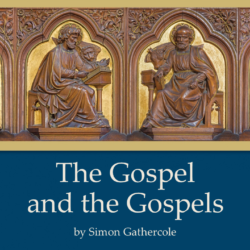
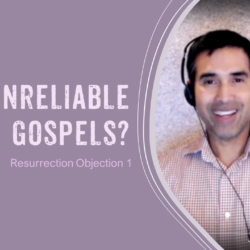
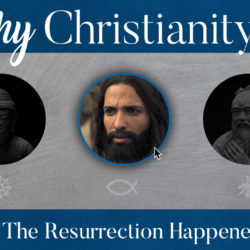
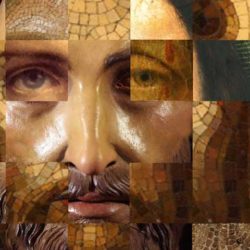

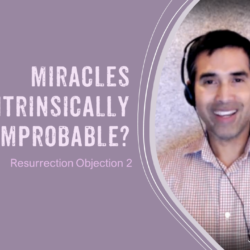
Dear Pastor Sean,
Are you aware of any written work by Wright that enumerates the mutations he uses in this talk (link dead by the way)? I have read his Resurrection of the Son of God and there is no such list in there. I also note that in that work, he uses “mutation” quite flexibly, sometimes referring to the Judeo-Christian movement as a whole, sometimes referring to resurrection belief (two-stage), and sometimes other points or in the plural.
Many blessings and thanks for the great work!
John